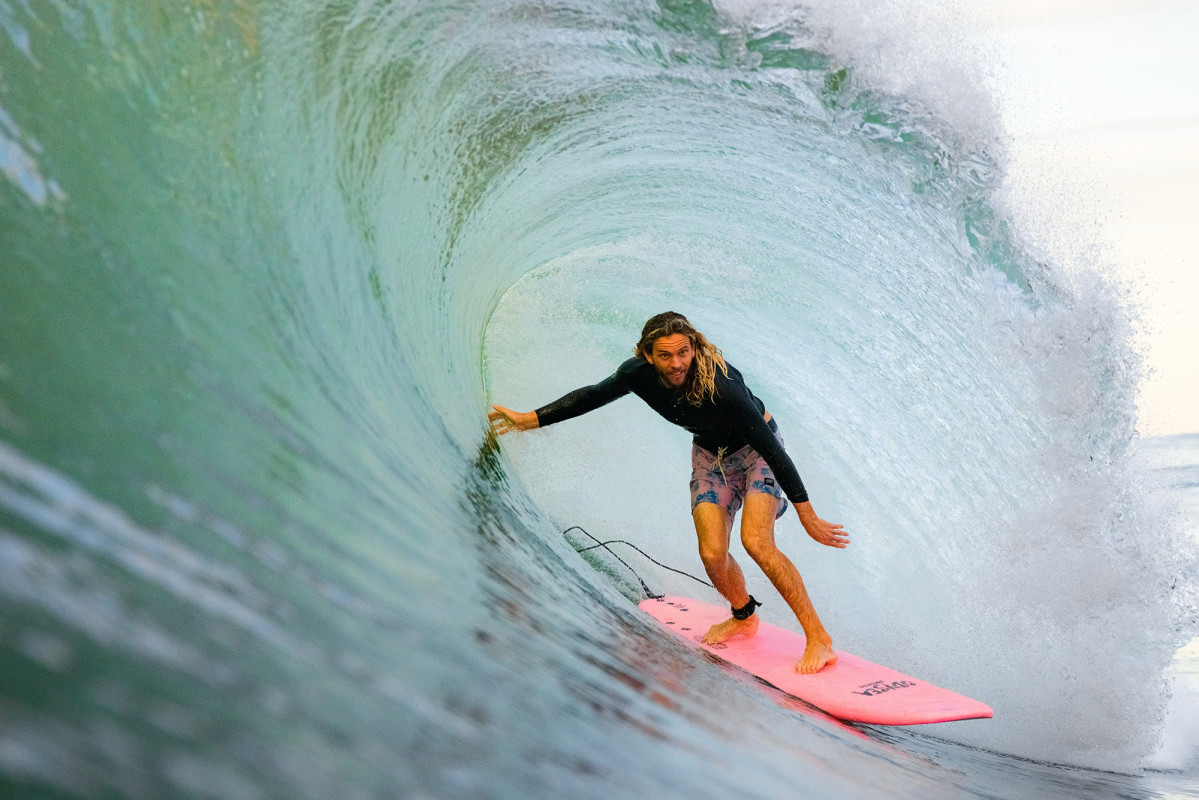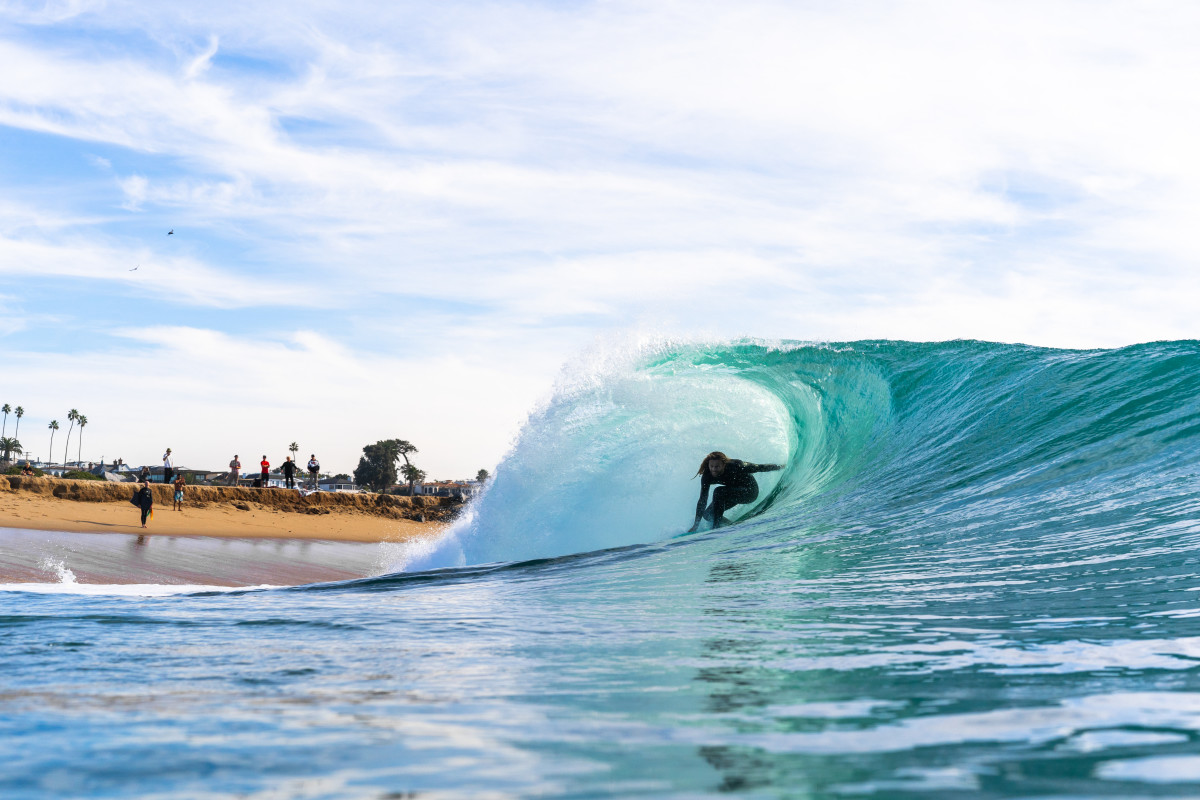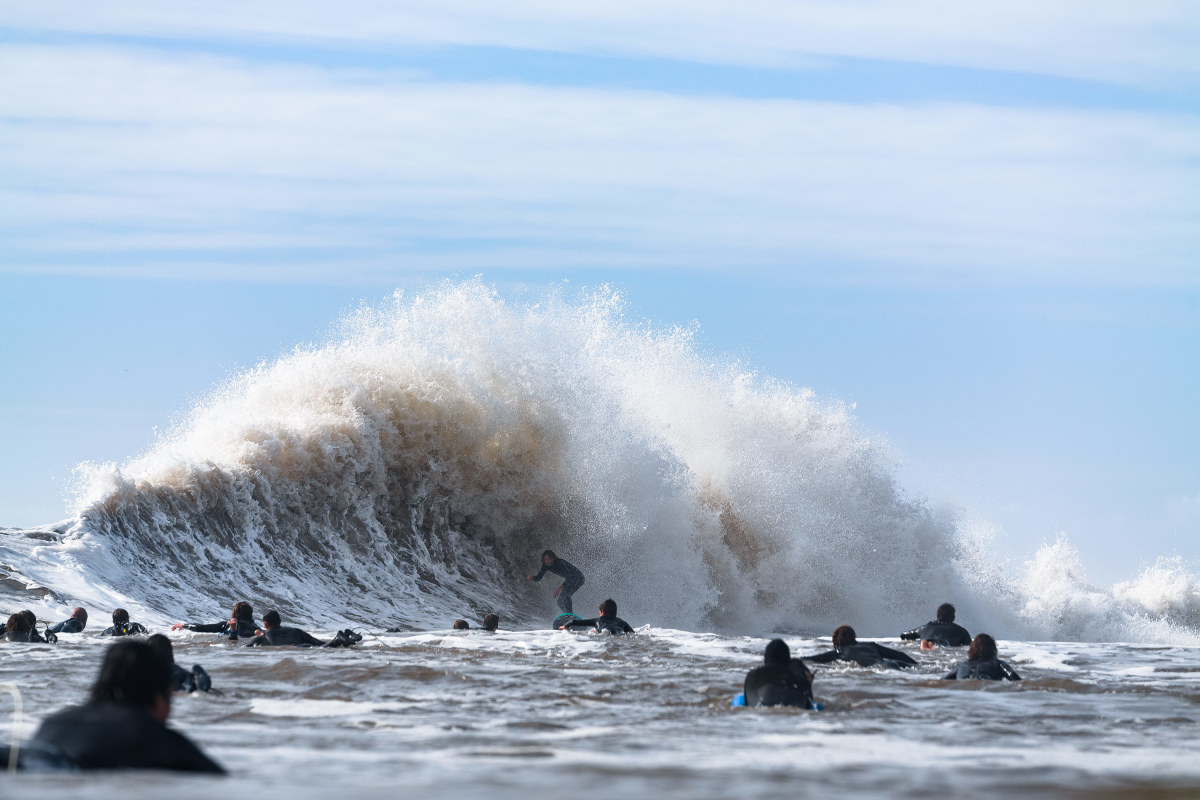
Photo: Ryan "Chachi" Craig
Give Blair Conklin a board – literally any board, including those that very narrowly resemble anything close to a traditional surf craft – and let him go. From soft-tops to skimboards to bodysurfing handplanes, and hybrid Frankenstein monsters in between, he embodies versatility in this modern age of weird and whacky wave-riding vehicles.
But a standard foam and fiberglass shortboard? Nah, not for him.
The same goes for waves. While he hails from Laguna Beach, cutting his teeth (and damning his shins) on a skimboard in the one of leading shorebreak surf towns in the world, his repertoire of waves he rides runs much deeper than that. He’s ridden calving glacier waves in Alaska, he’s a familiar face in the tube any time the Wedge gets double-overhead, he shreds river waves in Europe, and he’s surfed more of the world’s emerging wave pools (probably) than anyone else.
But the bigger stuff? Anywhere like Pipe, Chopes, or Nazaré? Nah, not for him.
Blair exists in a niche realm of surfing, one where the possibilities are simultaneously vast in terms of what boards he rides, and what waves he rides. And yet, he gravitates towards the weird, the unconventional, the new, the fresh, the experience rather than the score. And from that, not to mention the rise of documenting these adventures on YouTube, he’s made a career out of it.
So, during The Cape Hotel’s annual “Switching Gears” gathering down in Cabo San Lucas, Blair and I shot the breeze about his wide-ranging and peculiar path through the surf world. Scroll on.
Related: Blair Conklin Surfs Mind-Melting “Infinity Wave” (Clip)

Photo: Owen Beim
SURFER: If you had a job title, what would it be? Skimboarder, surfer, YouTuber…?
Conklin: These days, I guess it’s all the above. I spend most of my time, career-wise, making videos. And that’s what’s paying the bills. I’m very lucky and fortunate to have a career path, where I get to do what I love. I was able to find an alternative route to make a living out of it.
How lucrative is it to have a hit YouTube channel?
It’s turned into something I could’ve never imagined it would be…especially being a skimboarder. Traditionally, the only way to make money in competition is through competition. And those are never nearly as good of a payout as surf contests. Skimboarding is probably 1/1,000th the size of surfing. So, the prize purses are too. But it’s been incredible. Not only do you get revenue from YouTube and Google, but that leads to sponsorships and brand deals, too. Then, you get invited to things, and all these doors open, just because people see your videos.
Take us back to the beginnings in Laguna. Were you drawn to skimming more at first, then surfing came later?
Growing up in Laguna, I was definitely drawn to skimming. That was my first love. Laguna is the mecca for the sport. The waves are better for skimboarding [than surfing] 90 percent of the time. So, that’s usually what I tend to do. The other nice thing about skimming is, you don’t have to battle a crowd quite as much. You get a lot of waves in a short period of time.
I got into surfing a little later in my life. I got into it in high school, because I didn’t want to do P.E., so I did Surf Team instead. Then that turned into me going on some really fun trips, and getting better at surfing. When I went up to college at Berkeley, there wasn’t a lot of good skim spots, so I surfed a lot. I surfed OB [Ocean Beach, San Francisco] a lot. That was the closest wave to school for me. That was my escape. It was nice to get away from the books.
Related: Watch: Blair Conklin Rides (Possible) World Record for Longest Wave on Skimboard
Speaking of school, what did you study?
I studied Environmental Science at Berkeley. I got a bachelor’s in science. Then, I kind of took a break from it, and tried my luck at skimboarding to see if it turned into something. I gotta say, I’m pretty glad I didn’t get an office job. [Laughs.] I still use my degree in a sense. I love supporting non-profits that are working to help clean the ocean, and any way I can help promote the good work the surf community is doing to keep our environment clean. I’m there to back it.
How does the skim community differ from the surf community?
I’d say the skim community is so much more welcoming. It’s because we’re so tight-knit, and there are so few people who do it. If you’re new to the sport, people are open to helping you out. We want each other to succeed. In surfing, I think it’s kind of the opposite these days in California. It’s oversaturated almost. There’s not a whole lot of places to learn where it’s not crowded. Anywhere I go, any skim community around the world has just welcomed me with open arms, and down to show me their local spots. You definitely don’t get that in surfing. [Laughs.] One last thing, in skimboarding, you suffer so much and go through so many injuries just to get to a point where you can ride a wave. So, we recognize that. When we someone who is able to skim well, we know they’ve sacrificed their body to get there.

Photo: Ryan "Chachi" Craig
How does skimming influence your surfing?
I think it was actually vice versa. I watched surf movies growing up, and all I had were these skim waves in Laguna, so I tried to figure out how I could incorporate the surfing style into my skimming. I was obsessed with surf movies as a kid. Like Modern Collective. I loved that futuristic, innovative, aerial surfing. I wanted to bring that into what I did on the shorebreak.
With surfing, what draws you to ride soft-tops so much?
Being in Laguna, where most of the waves are shorebreak, I felt more comfortable pulling into barrels on a soft board. Then, I would always just travel with those boards. They’re easy to thow in a bag, in a car…and the waves that I like riding are the ones that break on the sand. So, I just gravitated towards riding a soft board. I don’t have to worry about them breaking, or them breaking me. I think it has saved me a lot of money – from broken boards to hospital bills. [Laughs.]
You might be one of the world’s leading authorities on wave pools, since you’ve been to so many of them. What would you say to the surf purists, who are anti wave pools?
I’d just say be open-minded. Be open to new ways of riding waves. That’s how I’ve always looked at surfing. What can we do that’s new, that’s different? They’re becoming such incredible waves to innovate the sport. If you know what section you’re going to hit every time, you can make a board exactly for that section. To see how fast things are changing is just incredible. It’s really creative – no pool is the same. Every pool pumps out different types of waves.
Do you have a current favorite wave pool?
I got to surf the Boa Vista Village wave pool in São Paulo last year. It has the Perfect Swell technology, and the length of the pool is insane. You’ll see Italo [Ferreira] do two airs on one wave, and both of the airs will be different. It’s absurf what they’re pumping out. And then a very close second, is the new wave pool in Munich, Germany [02 Surftown Muc]. That’s also a new technology. It’s a pneumatic system, so it’s similar to Perfect Swell. You can change the wave with the click of a button. You want a barrel? Here’s a barrel. You want an air? Here you go.
What do you think the future of wave pools looks like?
Just this year, I think they’re opening 17 new pools across the world. They are definitely here to stay. It’s opening up surfing to a new audience, which hasn’t had access before. It’s incredible in that sense. There’s going to be a whole new wave of surfers from inland areas.
What’s next for you? Next wave pool, next wave you’ve been itching to score?
I think I’m gonna go back to Munich to the pool there. They’re gonna be doing a big grand opening for the public. I’m so excited for that. They’ve got a pretty dang insane surf scene for being in the middle of a landlocked city center. I’m turning into a pretzel and beer lover. [Laughs.]
Related: First Look: Flawless Waves in Landlocked Munich, Germany

